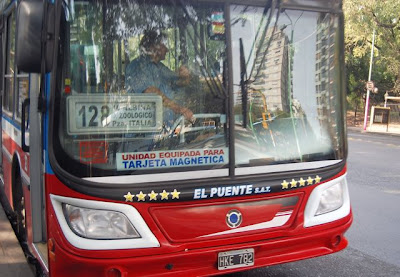My friend and colleague Edward Hasbrouck – one of the best-traveled
people I know, and we share a publisher – is an addict of The Amazing Race. He regularly reviews the
show on his own blog, managing to provide serious travel information in the
context of a program that might otherwise be considered frivolous. He
sent me a link to the episode, which started in the northwestern wine region
surrounding the town of Cafayate, and I even opened it, but was stymied by
constant buffering on the YouTube page.
Nevertheless, today I received a copy of Edward’s regular
newsletter with his critique of the episode, and I have a few comments on his
comments, intended in the spirit of constructive criticism. Given his broad
knowledge of the travel world, he knows far more than I do about most places,
but there were a few items I could not let pass.
Argentina’s
Andean Northwest is indeed the most indigenous region of the country and, as
Edward notes, “All the people the racers met this week appeared to be of
indigenous heritage” (such as the woman above, from the town of Humahuaca). He repeats, however, the oversimplification that “most
Argentines are mainly or entirely of European ancestry, with the largest
proportion descended from 19th and early 20th century
immigrants.” It’s true, of course, that Argentina saw massive European
immigration during that period, and it’s particularly noticeable in the cities,
but a DNA study a few years ago – to which I don’t have the reference at hand -
concluded that nearly half of all Argentines can trace their heritage back to
the country’s pre-Columbian peoples. It doesn’t mean, of course, that the indigenous
heritage is dominant everywhere, but it is significant.
I enjoyed Edward’s commentary on the outlying stockyards
barrio of Mataderos, where the city meets the countryside in the Feria de Mataderos, a weekly
street fair. I have to take exception, though, with Edwards statement that the
barrio’s Nueva Chicago soccer gang can’t match the violence levels of Britain’s
soccer hooligans. Argentina’s barras bravas are a plague on the sport, and
often intimidate players on their own team and even management – which timidly
gives them free tickets in hopes of maintaining “peace” with them. In fact,
it’s not unusual for rival barras of the same team to attack each other, and
deaths are not unusual – in a recent case, one barra shot at a bus carrying
their rivals, and killed somebody on board. I wholeheartedly agree with Edward,
though, that anybody attending a soccer match in Buenos Aires or elsewhere in
the country should wear neutral colors – drab is good, drabber is better.
Finally, the grammatical pedant in me has to note that the
word “Quilmes” – which describes the pre-Colombian fortress
ruins near Cafayate (pictured above), the Buenos
Aires suburb that takes its name from the indigenous people marched there
by the Spaniards, and the beer that’s manufactured
there today – does not have an accent. Likewise, the transport company Buquebus,
which operates the ferries between Buenos Aires and Uruguay, has no accent.





























